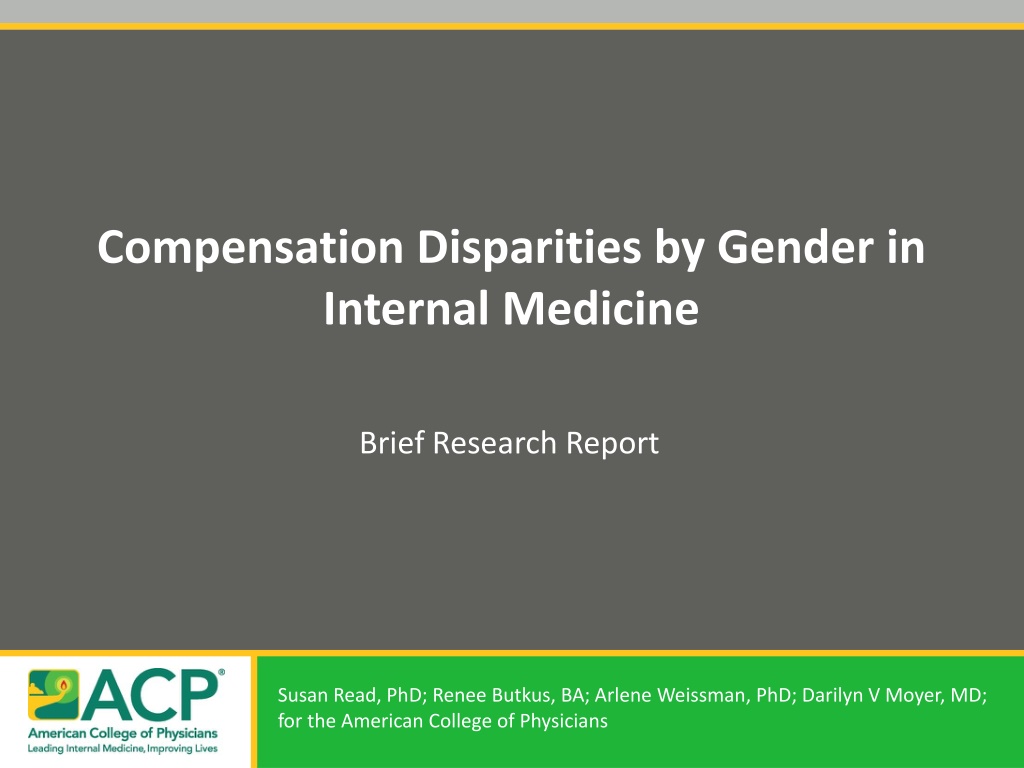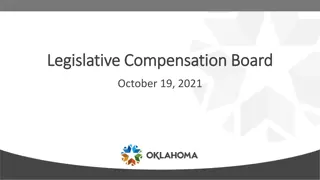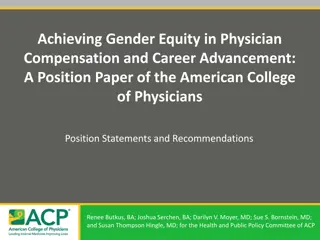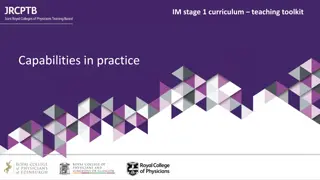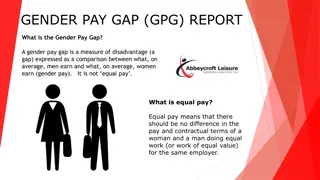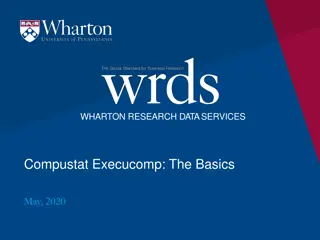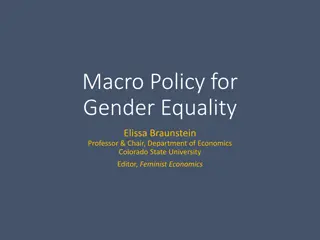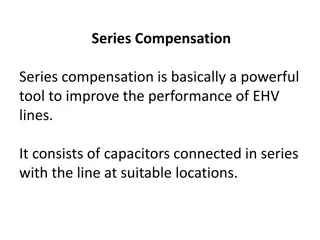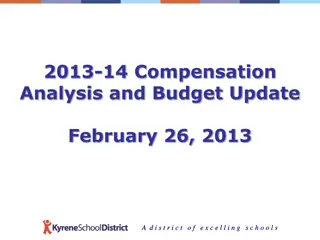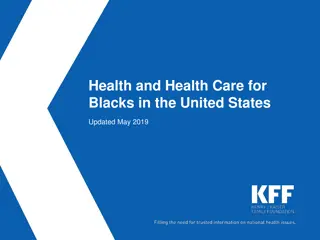Gender Compensation Disparities in Internal Medicine: Research Report
This research report by Susan Read, PhD, and colleagues from the American College of Physicians examines gender disparities in compensation among U.S. internists. Despite progress in gender diversity in the physician workforce, women continue to earn substantially less than men even after adjusting for factors like specialty, hours worked, and experience. The study found that women earned 80 cents for every dollar earned by men, highlighting a $50,000 differential in median annual salary.
Download Presentation

Please find below an Image/Link to download the presentation.
The content on the website is provided AS IS for your information and personal use only. It may not be sold, licensed, or shared on other websites without obtaining consent from the author. Download presentation by click this link. If you encounter any issues during the download, it is possible that the publisher has removed the file from their server.
E N D
Presentation Transcript
Compensation Disparities by Gender in Internal Medicine Brief Research Report Susan Read, PhD; Renee Butkus, BA; Arlene Weissman, PhD; Darilyn V Moyer, MD; for the American College of Physicians
Objective To describe physician compensation by gender among U.S. American College of Physicians (ACP) internists. 2
Background Despite progress toward gender diversity in the U.S. physician workforce, disparities in compensation and career advancement persist. Studies document that women earn substantially less than men after adjustment for specialty, hours worked, experience, and practice characteristics. 3
Methods Cross-sectional survey of panelists from the Internal Medicine Insider Research Panel, which is comprised of ACP non-student U.S. members. Participants were eligible if they were currently practicing physicians. Survey included items on compensation, demographics, and employment characteristics. Compensation determined by the question: What is your estimated annual income from your professional activities before taxes? (For employees, please include salary, bonus, and profit sharing contributions. For owners, please include earnings after tax-deductible business expenses but before income tax.) 4
Sample 56.3% of invited participants responded to the survey. Comparison of Survey Respondents with ACP U.S. Practicing Physician Members Characteristic Survey Respondents ACP Members Female 34% 30% White 58% 63% Specialty General internal medicine Hospital medicine Subspecialty 55% 17% 28% 54% 12% 34% Employee 73% 76% 5
Analyses Most (91%) reported working full-time ( 35 hours/week), so analyses of income include only this group (n = 374). Descriptive statistics (medians and interquartile ranges [25th percentile and 75th percentile]) compared income by gender. 6
Results 1. Overall, the median annual salary was $250,000 for men and $200,000 for women, indicating a $50,000 differential. In other words, women earned 80 cents for every dollar earned by men. Women Men (n = 120 [32%]) (n = 254 [68%]) Median annual income (IQR), $ 200,000 250,000 (168,500 247,500) (200,000 300,000) 7
Results Gender differences in salary were evident across many demographic and employment indicators. The following slides highlight salary differentials across: Specialty Employment status Age group Race Primary professional setting Professional activity in which most of time is spent Married/partnered vs. not married/partnered Spouse employment status Parent vs. not a parent 8
Results 2. Specialty: Women earned less than men in every internal medicine specialty, ranging from a differential of $29,000 for internal medicine specialists, to $45,000 for subspecialists. Women (n = 120) Men Specialty (n = 254) General internal medicine 62% 48% Median salary (IQR), $ 191,000 220,000 (150,000 225,000) (180,000 255,000) Hospital medicine 19% 23% Median salary (IQR), $ 220,000 258,000 (184,000 250,000) (223,750 300,000) Subspecialty 19% 30% Median salary (IQR), $ 230,000 275,000 (175,000 260,000) (220,000 410,000) 9
Results 3. Employment Status: The income differential between men and women was higher among physicians who were practice owners than for employees ($72,500 vs. $43,000). Women (n = 120) Men Employment Status (n = 254) Employee 84% 69% Median salary (IQR), $ 202,000 245,000 (175,000 242,500) (200,000 287,500) Owner 16% 31% Median salary (IQR), $ 167,500 240,000 (118,750 210,000) (160,000 312,500) 10
Results 4. Age Group: The income gap between men and women was directly related to age: $35,000 for those under age 40, $40,000 for those 40-55 years, and $52,500 for those 56 years and older. Women (n = 120) Men Age Group (n = 254) 39 years 26% 22% Median salary (IQR), $ 200,000 235,000 (175,000 220,000) (200,000 280,000) 40-55 years 49% 38% Median salary (IQR), $ 210,000 250,000 (165,000 250,000) (206,000 310,000) 56 years 25% 41% Median salary (IQR), $ 197,500 250,000 (166,000 250,000) (190,000 309,000) 11
Results 5. Race: White male physicians earned $47,500 more than white female physicians, and non-white male physicians earned $50,000 more than non-white female physicians . Women (n = 120) Men Race (n = 254) White 63% 62% Median salary (IQR), $ 200,000 247,500 (175,000 240,000) (200,000 309,250) Other 37% 38% Median salary (IQR), $ 200,000 250,000 (160,000 250,000) (200,000 300,000) 12
Results 6. Primary Professional Setting: The most pronounced discrepancy between men and women occurred in solo practices ($70,000) and the smallest in government settings ($30,000). Women (n = 120) Men Primary Professional Setting (n = 254) Solo practice 6% 14% Median salary (IQR), $ 130,000 200,000 (120,000 233,000) (125,000 250,000) Group practice 30% 34% Median salary (IQR), $ 197,500 250,000 (152,500 247,500) (200,000 322,500) Medical school or university-affiliated hospital or clinic 28% 22% Median salary (IQR), $ 196,000 250,000 (173,750 242,500) (200,000 329,000) Community of non-university-affiliated hospital or clinic 21% 19% Median salary (IQR), $ 220,000 260,000 (185,500 250,000) (240,000 320,000) Federal, state, or local government hospital or clinic 9% 8% Median salary (IQR), $ 200,000 230,000 (180,000 215,000) (200,000 250,000) 13
Results 7. Professional Activity: The income difference by gender was $37,500 for physicians who spend most of their time in face-to-face direct patient care, and $52,500 for those in administration. Professional activity in which most of time is spent Women (n = 120) Men (n = 254) Face-to-face direct patient care 79% 79% Median salary (IQR), $ 200,000 237,500 (166,500 240,000) (200,000 300,000) Administration 17% 17% Median salary (IQR), $ 222,500 275,000 (191,500 297,250) (245,000 337,500) Medical teaching 2% 2% Median salary (IQR), $ 205,000 284,500 (180,000 205,000) (73,333 392,250) Research 1% 2% Median salary (IQR), $ 175,000 350,000 (175,000 175,000) (195,000 372,500) 14
Results 8. Married/Partnered vs. Not Married/Partnered: The salary for men was $50,000 higher than for women when physicians were married/partnered, and $52,500 higher when physicians were not married/partnered. Women (n = 120) Men Currently Married or Partnered (n = 254) Yes 82% 92% Median salary (IQR), $ 200,000 250,000 (169,500 250,000) (200,000 300,000) No 18% 8% Median salary (IQR), $ 197,500 250,000 (165,750 223,250) (206,250 315,000) 15
Results 9. Spouse Employment Status: Among physicians who are married or partnered, male physicians earned $50,000 more than female physicians when their spouse was employed full-time, but only $20,000 more when their spouse was employed part-time. The only case in which women earned a higher salary is when their spouse was retired (women earned $35,000 more than men). Women (n = 120) Men Spouse Employment Status (n = 254) Full-time 75% 42% Median salary (IQR), $ 200,000 250,000 (160,000 227,500) (200,000 300,000) Part-time 7% 17% Median salary (IQR), $ 220,000 240,000 (210,000 250,000) (200,000 315,000) Retired 8% 6% Median salary (IQR), $ 255,000 220,000 (205,000 284,500) (160,000 272,000) Neither employed nor retired 6% 31% Median salary (IQR), $ 245,000 253,000 (190,750 318,750) (200,000 328,750) 16
Results 10. Parent vs. Not a Parent: The salary difference between men and women was the same regardless of whether the respondent was a parent (men earned $50,000 more than women when physicians were parents or not parents). Women (n = 120) Men Parent (n = 254) Yes 66% 82% Median salary (IQR), $ 200,000 250,000 (165,000 250,000) (200,000 300,000) No 34% 18% Median salary (IQR), $ 200,000 250,000 (177,500 245,000) (200,000 333,000) 17
Conclusion Female internists earn less than men whether they are generalists, hospitalists, or subspecialists. Women earn less than men regardless of every other demographic and employment characteristic included in this study, with the exception being when women have a spouse who is retired. This study and others have documented that inequities exist even within groups of physicians with similar professional and employment characteristics. 18
